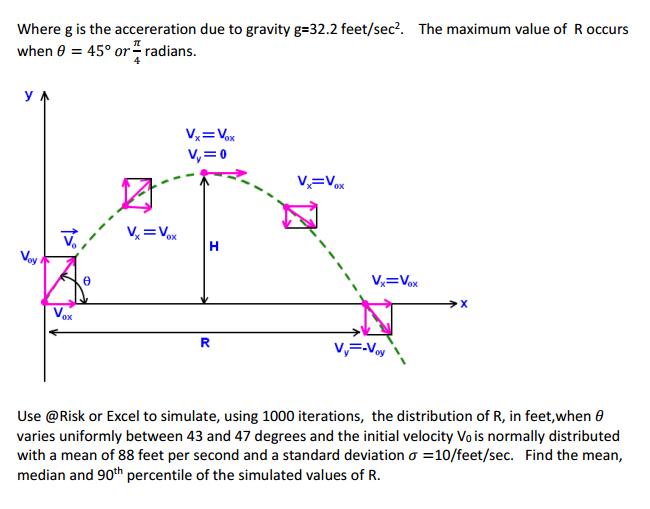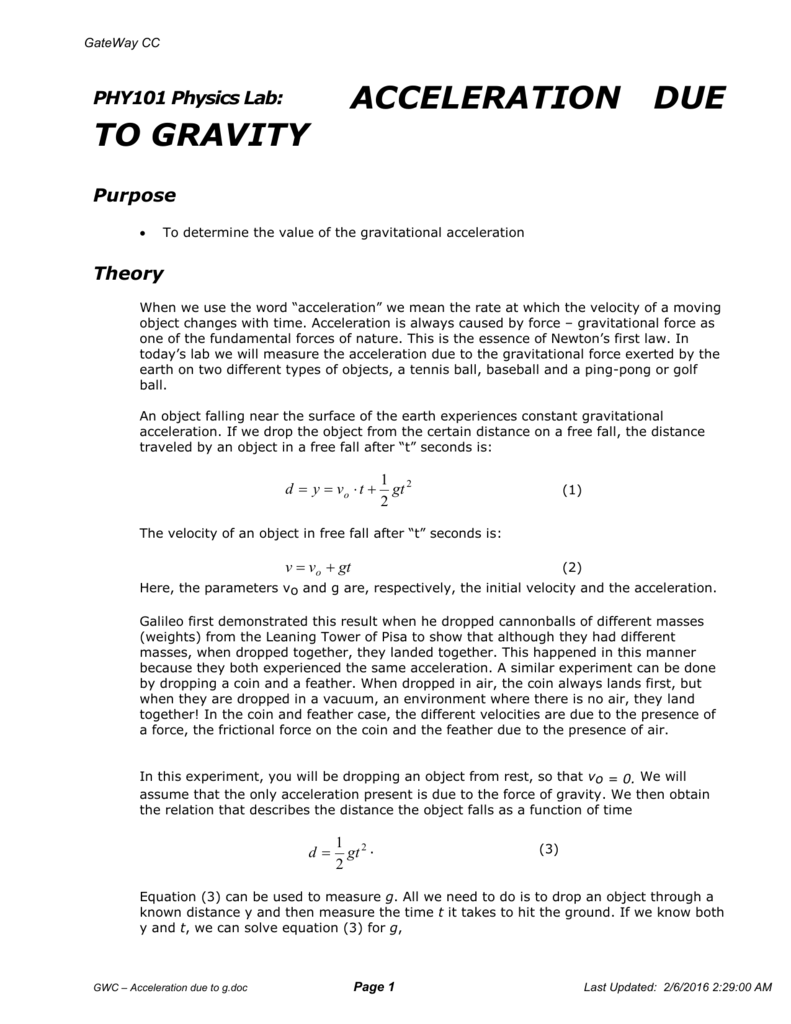

Workshops numbered 800-833 are open to all undergraduate and graduate students and are awarded lower division credit. Inaccuracy: Inaccuracy in this experiment is caused by (i) the presence of air resistance and (ii) the slight delay in the release of the. 600-level courses are open to graduate students only. Calculation: The value for g is calculated from the height of the fall (h) and the time taken (t) data using the following motion equation: h () g t 2. But, at large distances from the Earth, or around other planets or moons, it is varying. To earn graduate credit additional course requirements must be met. Near the surface of Earth, the acceleration due to gravity is approximately constant. The fuel jet was ignited either at 60 mm or 90 mm downstream from the nozzle in normal gravity experiment by using a pulsed Nd:YAG laser (Spectra-Physics. 500-level classes are advanced undergraduate classes. Now repeat the experiment, but this time use a ping-pong ball at the edge of the table. Calculate the acceleration of gravity from your experiment, by using d 1 2 gt2g 2d t2 Height fallen (d) : Measured acceleration of gravity (g) : 8. Courses numbered 300-599 are designated as senior college (upper division) courses if completed at a regionally accredited four-year institution. Measure the height from the floor to the table. Courses numbered 100-299 are designated as junior college (lower division) courses. By so doing, we will be able to better focus on the conceptual nature of physics without too much of a sacrifice in numerical accuracy.Courses numbered 000-099 are classified as developmental courses (unless a lab section which corresponds with a 100-599 lecture course). We will occasionally use the approximated value of 10 m/s/s in The Physics Classroom Tutorial in order to reduce the complexity of the many mathematical tasks that we will perform with this number. An example of a DCI in physics is the force of gravity, which is a type. There are slight variations in this numerical value (to the second decimal place) that are dependent primarily upon on altitude. Acceleration and Velocity: How Does the Direction of Acceleration Affect. The numerical value for the acceleration of gravity is most accurately known as 9.8 m/s/s. You must complete, before the end of the lab session, a brief lab report following. A matter of fact, this quantity known as the acceleration of gravity is such an important quantity that physicists have a special symbol to denote it - the symbol g. Title Page: Friction Lab Satwinder Singh 3/27/17 Physics 411 Abstract The purpose of this experiment was to investigate the kinetic and static friction coefficient of a friction forces acting on a wooden block by increasing the mass in each experiment. Course Description: General Physics A (PHY 2048C) is a calculus-based. Then you will be introduced to gravitation along with Electricity and. Acceleration was found by finding the slope of the velocity time graph.
Acceleration due to gravity lab physics 411 free#
Define acceleration 1.) the object must be in free fall 2.) the object must have negligible air resistance 3. Letter from the Chairman of the Department of Mathematics and Physics and Physics. It is known as the acceleration of gravity - the acceleration for any object moving under the sole influence of gravity. Acceleration due to gravity is known to be 9.8 meters/sec/sec or 9.8 m/sec2 and is represented by g. Using the graph, the acceleration of gravity (g) can be found. Astronaut Mark Lee working on the Frog Embryology Experiment in the General. An Experiment to Measure Relative Variations in the One-Way Velocity of Light. You will measure distances, calculate average velocity, and then plot your average velocities on a graph of velocity vs. Present Status of the Absolute Measurement of Gravitational Acceleration.

This numerical value for the acceleration of a free-falling object is such an important value that it is given a special name. In this lab you will investigate an object’s acceleration under the influence of the Earth’s gravity.

A free-falling object has an acceleration of 9.8 m/s/s, downward (on Earth). It was learned in the previous part of this lesson that a free-falling object is an object that is falling under the sole influence of gravity.


 0 kommentar(er)
0 kommentar(er)
